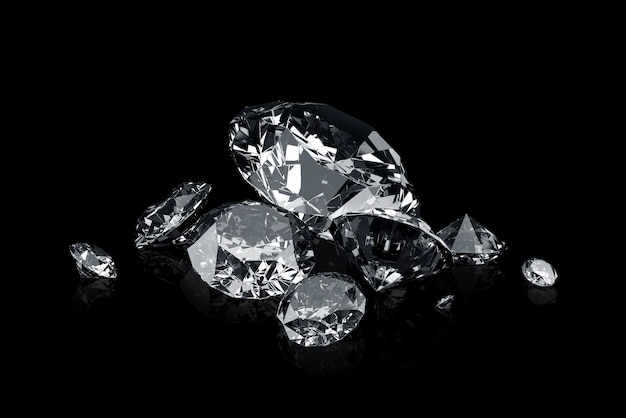Introduction
In a world where sustainability ethics are increasingly vital, lab-grown diamonds have emerged as a compelling alternative to their naturally occurring counterparts. But what exactly are lab-grown diamonds, how do they compare to traditional diamonds? In this article, we’ll delve into the fascinating world of lab-grown diamonds, focusing specifically on the HPHT (High Pressure High Temperature) process used in their creation.
What are Lab Grown Diamonds?
Lab-grown diamonds, also known as synthetic or cultured diamonds, are created in controlled laboratory environments rather than being mined from the earth. Despite their origin, these diamonds possess the same physical, chemical, optical properties as natural diamonds. They are composed of carbon atoms arranged in the crystal structure characteristic of diamonds.
Types of Lab Grown Diamonds
There are two primary methods used to produce lab grown diamonds hpht: High Pressure High Temperature (HPHT) Chemical Vapor Deposition (CVD). While both methods result in high-quality diamonds, each has its unique characteristics applications.
How are Lab Grown Diamonds Made?
Among the methods used to create lab-grown diamonds, the HPHT process stands out for its efficiency ability to produce large, high-quality diamonds. This process involves replicating the conditions found in the earth’s mantle, where natural diamonds are formed.
HPHT Process
In the HPHT process, a small diamond seed is placed in a carbon-rich environment along with a catalyst metal. The assemblage is then subjected to extreme pressure high temperatures, mimicking the conditions deep within the earth. Under these intense conditions, the carbon atoms bond together, gradually crystallizing around the seed to form a diamond.
Advantages of Lab Grown Diamonds
Lab-grown diamonds offer several advantages over their natural counterparts. Firstly, they are more environmentally friendly, requiring significantly less energy producing fewer carbon emissions during the manufacturing process. Additionally, lab-grown diamonds are free from the ethical concerns associated with traditional diamond mining, such as child labor environmental destruction.
Comparing Lab Grown vs Natural
When comparing lab-grown diamonds to natural diamonds, there are several factors to consider. While both types of diamonds share identical physical properties, lab-grown diamonds often exhibit fewer inclusions blemishes due to the controlled conditions of their formation. Furthermore, lab-grown diamonds typically cost less than natural diamonds of comparable quality, making them an attractive option for budget-conscious consumers.
Quality Certification
Just like natural diamonds, lab created diamonds are subject to rigorous quality standards certification processes. Organizations such as the Gemological Institute of America (GIA) evaluate lab-grown diamonds based on criteria such as cut, color, clarity, carat weight, ensuring consumers can make informed purchasing decisions.
Uses of Lab Grown Diamonds
Lab-grown diamonds are not only suitable for use in jewelry but also have various industrial applications. Their exceptional hardness thermal conductivity make them ideal for cutting tools, heat sinks, even as semiconductors in electronic devices.
Future of Lab Grown Diamonds
As technology continues to advance, the popularity of lab-grown diamonds is expected to soar. With increasing consumer awareness of sustainability ethical concerns, lab-grown diamonds offer a compelling alternative to mined diamonds. Market trends indicate a growing demfor lab-grown diamonds, driven by their affordability, ethical sourcing, environmental sustainability.
Conclusion
In conclusion, lab-grown diamonds produced using the HPHT process represent a sustainable, ethical, cost-effective alternative to natural diamonds. With their identical properties lower environmental impact, lab-grown diamonds are revolutionizing the jewelry industry beyond.




